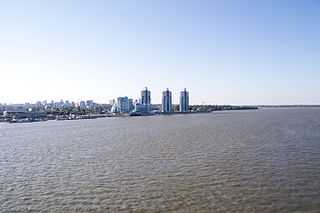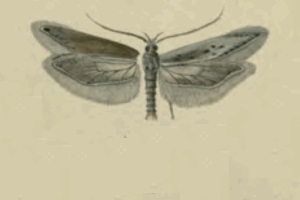
Krasnoyarsk Krai is a federal subject of Russia, with its administrative center in the city of Krasnoyarsk, the third-largest city in Siberia. Comprising half of the Siberian Federal District, Krasnoyarsk Krai is the largest krai in the Russian Federation, the second largest federal subject and the third largest subnational governing body by area in the world, after Sakha and the Australian state of Western Australia. The krai covers an area of 2,339,700 square kilometers (903,400 sq mi), which is nearly one quarter the size of the entire country of Canada, constituting roughly 13% of the Russian Federation's total area and containing a population of 2,828,187, or just under 2% of its population, per the 2010 Census.

Khabarovsk Krai is a federal subject of Russia. It is geographically located in the Russian Far East and is a part of the Far Eastern Federal District. The administrative centre of the krai is the city of Khabarovsk, which is home to roughly half of the krai's population and the largest city in the Russian Far East. Khabarovsk Krai is the fourth-largest federal subject by area, and has a population of 1,343,869 as of 2010.

Primorsky Krai, informally known as Primorye, is a federal subject of Russia, located in the Far East region of the country and is a part of the Far Eastern Federal District. The city of Vladivostok is the administrative center of the krai, and the second largest city in the Russian Far East, after Khabarovsk. The krai has the largest economy among the federal subjects in the Russian Far East, and a population of 1,956,497 as of the 2010 Census.
A krai or kray is one of the types of federal subjects of modern Russia, and was a type of geographical administrative division in the Russian Empire and the Russian SFSR.

The Russian Far East is a region in Northeast Asia. It is the easternmost part of Russia and the Asian continent; and is administered as part of the Far Eastern Federal District, which is located between Lake Baikal in eastern Siberia and the Pacific Ocean. The area's largest city is Khabarovsk, followed by Vladivostok. The region shares land borders with the countries of Mongolia, China, and North Korea to its south, as well as maritime boundaries with Japan to its southeast, and with the United States along the Bering Strait to its northeast.

Stavropol Krai is a federal subject of Russia. It is geographically located in the North Caucasus region in Southern Russia, and is administratively part of the North Caucasian Federal District. Stavropol Krai has a population of 2,786,281 (2010).

Stavropol is a city and the administrative centre of Stavropol Krai, Russia. As of the 2021 Census, its population was 547,820, making it one of Russia's fastest growing cities.

Altai Krai is a federal subject of Russia. It borders clockwise from the west, Kazakhstan, Novosibirsk and Kemerovo Oblasts, and the Altai Republic. The krai's administrative centre is the city of Barnaul. As of the 2010 Census, the population of the krai was 2,419,755.

Barnaul is the largest city and administrative centre of Altai Krai, Russia, located at the confluence of the Barnaulka and Ob Rivers in the West Siberian Plain. As of the 2021 Census, its population was 630,877, making it the 20th largest city in Russia and the fourth largest in the Siberian Federal District.

Krasnodar Krai is a federal subject of Russia, located in the North Caucasus region in Southern Russia and administratively a part of the Southern Federal District. Its administrative center is the city of Krasnodar. The third most populous federal subject, the krai had a population of 5,838,273 as of the 2021 Census.
The North Caucasus, or Ciscaucasia, is a subregion of Eastern Europe in the Eurasian continent. It is the northern part of the wider Caucasus region, and is entirely a part of Russia, sandwiched between the Sea of Azov and Black Sea to the west, and the Caspian Sea to the east. The region shares land borders with Georgia and Azerbaijan to the south. Krasnodar is the largest city within the North Caucasus.

A krai is a type of federal subject of the Russian Federation. The country is divided into 89 federal subjects, of which nine are krais. Oblasts, another type of federal subject, are legally identical to krais and the difference between a political entity with the name "krai" or "oblast" is purely traditional, similar to the commonwealths in the United States; both are constituent entities equivalent in legal status in Russia with representation in the Federation Council. During the Soviet era, the autonomous oblasts could be subordinated to republics or krais, but not to oblasts. Outside of political terminology, both words have very similar general meaning and can often be used interchangeably. When a distinction is desirable, "krai" is sometimes translated into English as "territory", while "oblast" can variously be translated to "province" or "region", but both of these translations are also reasonable interpretations of "krai".

Perm Krai is a federal subject of Russia, located in Eastern Europe. Its administrative center is Perm. The population of the krai was 2,635,276.

Kamchatka Krai is a federal subject of Russia, situated in the Russian Far East, and is administratively part of the Far Eastern Federal District. Its capital and largest city is Petropavlovsk-Kamchatsky, home to over half of its population of 291,705 (2021).

Zabaykalsky Krai is a federal subject of Russia, located in the Russian Far East. Its administrative center is Chita. As of the 2010 Census, the population was 1,107,107.

Gnorimoschema is a genus of moths in the family Gelechiidae.
Russia, the largest country in the world, has international land borders with 14 sovereign states as well as 2 narrow maritime boundaries with the United States and Japan. There are also two breakaway states bordering Russia, namely Abkhazia and South Ossetia. The country has an internationally recognized land border running 22,407 kilometres (13,923 mi) in total, and has the second-longest land border of any country in the world, after China. The borders of the Russian Federation were mostly drawn since 1956, and have remained the same after the dissolution of the Soviet Union. In 2014, Russia annexed Ukraine's Crimean peninsula in a move that remains internationally unrecognized.
Gnorimoschema epithymella is a moth in the family Gelechiidae. It was described by Staudinger in 1859. It is found in Spain, France, Austria, Switzerland, Italy, Sardinia, Norway, Sweden, Finland, Estonia, Latvia, Belarus and Russia. Outside of Europe, it has been recorded from North Africa (Algeria) and Kyrgyzstan.

Gnorimoschema herbichii is a moth in the family Gelechiidae. It was described by Nowicki in 1864. It is found in Portugal, Spain, France, the Netherlands, Germany, Denmark, Poland, Hungary, Romania, North Macedonia, the Baltic region, Norway, Finland, Ukraine and Russia. In the east, the range extends to Transbaikalia, Mongolia and Kamchatka. It is also found in North America, where it has been recorded from Alberta, Yukon, Manitoba and Ontario.

Uryankhay Krai was the name of what is today Tuva and was a short-lived protectorate of the Russian Empire that was proclaimed on 17 April 1914, created from the Uryankhay Republic which had recently proclaimed its independence from the Qing dynasty of China in the Mongolian Revolution of 1911. After the February Revolution and abdication of Tsar Nicholas II, Uryankhay Krai recognized the new Russian Republic and reaffirmed its status as a Russian protectorate in 1917.















